
The building that was once the Motel de Ville, located at 650 W. Colfax, is no more. Demolition began in October 2022 to make way for The Finch, “a 7-story [apartment] project designed to cater to young professionals and affluent singles who enjoy city living.” Demolition was completed in December 2022.
The Story
The Motel de Ville was located on the southeast corner of Galapago Street and W. Colfax Ave in downtown Denver, Colorado. Construction on the motel began in February of 1959. The Motel de Ville was designed by the Charles Colbert & Lowrey architectural firm of New Orleans, specialists in luxury motor hotels.
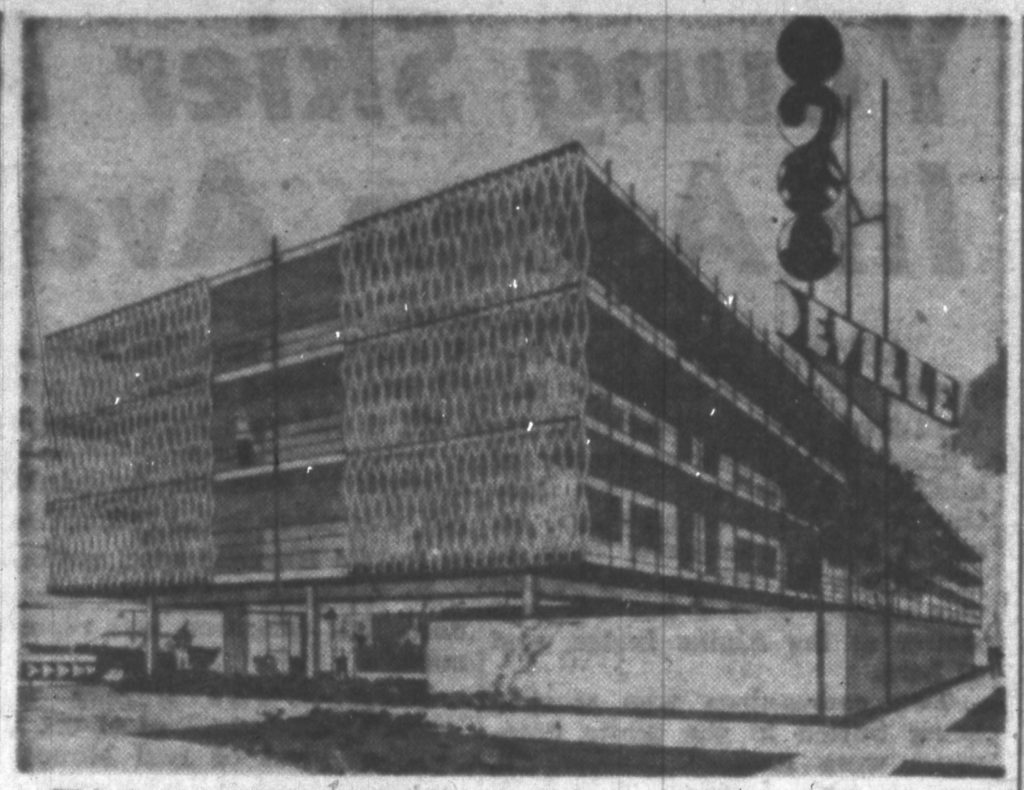


Construction consisted of reinforced concrete with brick facing. A walkway went completely around the building at each floor. The four above ground stories were built on ‘stilts’ with the ground level devoted to parking for tenants. An elevator served the upper floors and basement. Partners in the Motel de Ville ownership and management were Lewis Reis, Samuel Fortner, and Seymour Fortner.

Construction was completed in September of 1959 at a cost of $750,000. The 60 unit luxury-type motor motel was furnished with “sofas which convert into beds giving tenants a living room by day and bedroom at night,” year round air conditioning, and a “dial telephone in a each room, permitting the direct dialing of calls without use of a central switchboard.”

Other amenities included a 20-seat coffee shop, conference room, heated swimming pool and parking for 30 cars.


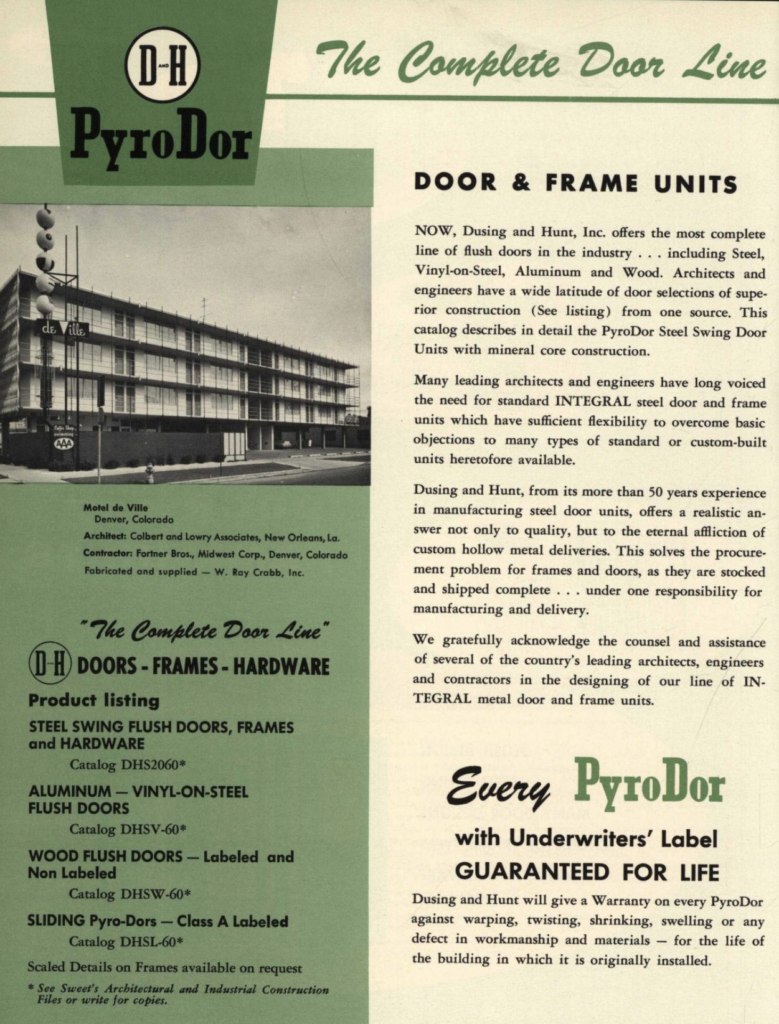
Architectural Record, July 1960.
“The regular, 3-story rectangular plan made possible a simple concrete column and beam system with slab floor spans. Exterior walls are 6-in. block; partitions are 4-in. block. Providing access from exterior galleries and a central elevator-stair core meant that rooms could be arranged back-to-back and a central plumbing and utilities spine could thus be created, and serviced from a basement mechanical room. Hot and cold water systems to individual room blowers provide year-round air conditioning. Exterior surfaces were sprayed with a white plastic coating; interior partitions are plastered; ceilings are of acoustic plaster; floors are carpeted. The gallery railings are l-in. square steel tubing with stressed airplane cables; the grille facing the highway is of !14- by 4-in. aluminum ribbons.”

Idea: The Shaping Force, Charles Colbert 1987 (book)
“The exterior planes of a building’s facade have long been decorated and used to enhance appearance. Such action is particularly useful to camouflage the inept ugliness that often lies just behind. The Denver de Ville, 93. (1959), is a small downtown motel designed with perimeter corridors to allow minimum construction costs. The drab exterior was enclosed with an aluminum grillage made of aluminum flat bars, forced into the shapes of continuous sine curves, with rounded peaks and valleys opposing one another, from end to end. The grillages were intended to enclose the corridors, protect the weather walls from the sun and yet allow breezes to dissipate the heat from interior surfaces as they passed through. Flood-lighted at night, they also create an ever changing tracery of shadows on the wall behind, much like the vertical redwood slats on the New Orleans de Ville.”

Bob Dylan Stayed There, 1966

In his book No Direction Home, Robert Shelton recounted Dylan’s stay at the Motel de Ville while in town for a March 13th concert:
The plane’s vibrations had been diminishing, even though it hadn’t
been descending sharply. We’d forgotten that at Denver the ground
comes up to meet a plane arriving from the East. The Band stirred. They
were surprised he was still wide awake, still talking. Bob gave directions to
Victor and Bill about deplaning. He asked Robbie Robertson if he was up
to a few hours’ work when they got to the motel, and Robbie nodded.
We arrived in Denver at nearly three A.M. I thought that Dylan was
finished for the night. “Give us about ten minutes, Bob,” Dylan said, “and
then come down to the room.” Robbie and Dylan were again sprawled
out on twin beds, each holding acoustic guitars, starting an hour’s jam…I drank some coffee and tried to bring myself to life to tape them at work. It was all new material, I couldn’t put a title on anything. When Dylan came to “Sad-Eyed Lady,” he said, “This is the best song I’ve ever written. Wait till you hear the whole thing.
The result is the “Denver Hotel Room Jam Session, 1966.” The following songs were recorded:
Positively Van Gogh (Takes 1-7)
Don’t Tell Him, Tell Me (Takes 1-2)
If You Want My Love
Just Like A Woman (Takes 1-2)
Sad-Eyed Lady Of The Lowlands (Takes 1-5)
In Denver, Dylan gave another concert for three thousand people. The
amplification at the Denver Municipal Auditorium was a jangled echo.
After the concert, I returned to Dylan’s crowded motel room, where he
started to describe Lennon and McCartney beating a retreat from his Albert Hall concert a year earlier...some fans began calling up and friends dropped in. Bob
was expansive, but couldn’t conceal his fatigue. He saw me to the door.…he returned to the room and started telling everyone that it was getting late and he had some things to do. The party was over, for that night.
It’s been said that the rooms at the Motel de Ville were booked by Ashes & Sand, Inc., and that Bob Dylan stayed in Room 102 while Robbie Robertson stayed in Room 104 and Robert Shelton in Room 108.
Checking Out
The Motel de Ville was open through late 1975. In February 1976 the motel was sold for $430,000 and sat vacant through 1979. In 1980 Rocky Mountain Orthodontics , Inc. purchased the former motel and converted it into an office building. The aluminum grillage and gallery railings were removed. Motel room doors were covered over and the walkways surrounding the motel were only accessible via a maintenance door on each floor at the rear of the building. The conversion to an office building resulted in the “inept ugliness,” noted by Colbert in 1987, being exposed and exacerbated. In December 2021 Rocky Mountain Orthodontics sold the former motel and surrounding property for $15,500,000.


Before demolition commenced the former motel building was fully covered in white plastic, presumably for asbestos removal. Material that was used to cover over the motel room doors and some windows was also removed. When the white plastic was removed from the building all of the original motel room doors and window frames were exposed.


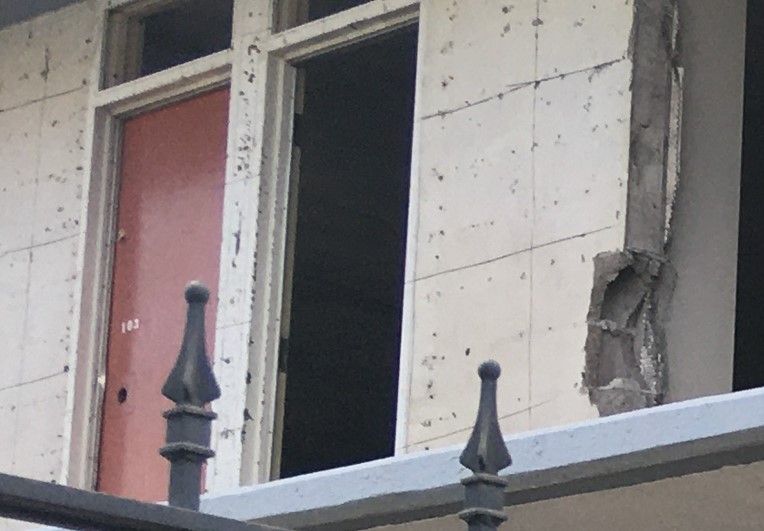
Demolition commenced in October 2022.



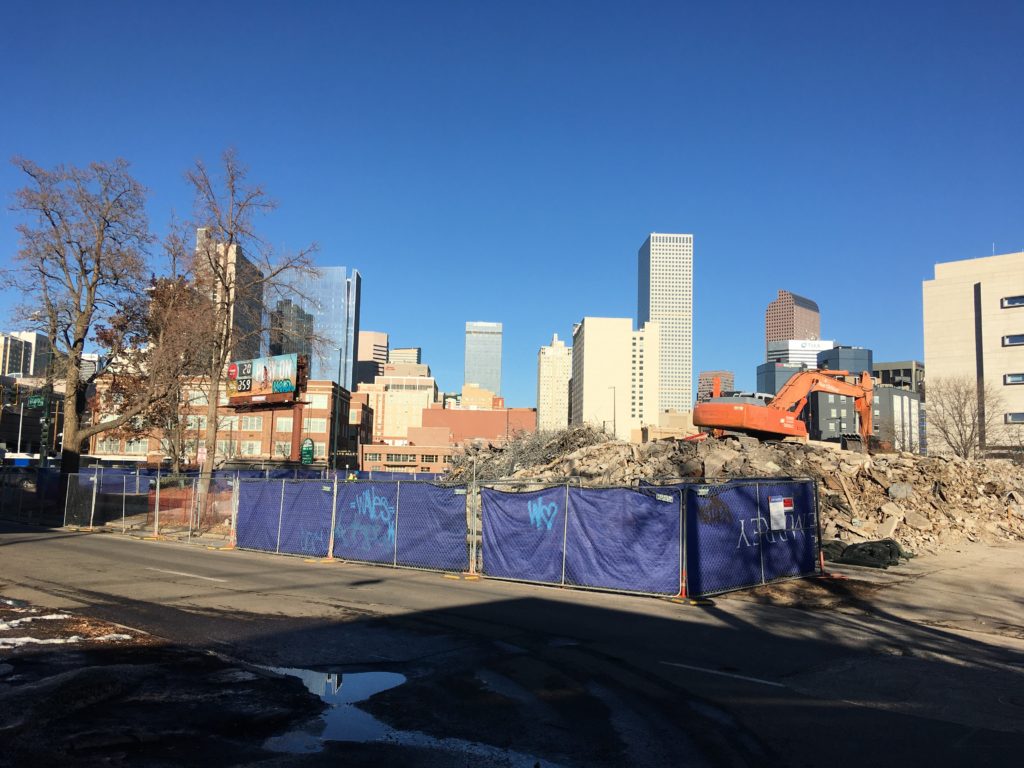
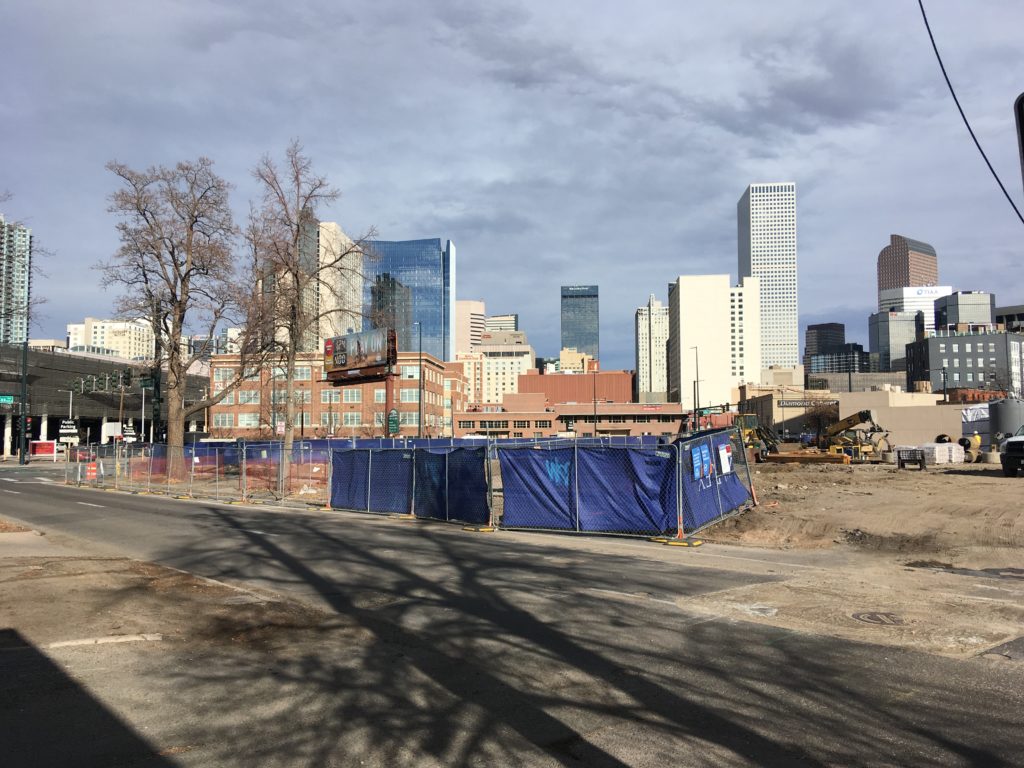
The Finch is expected to be completed in 2023.
